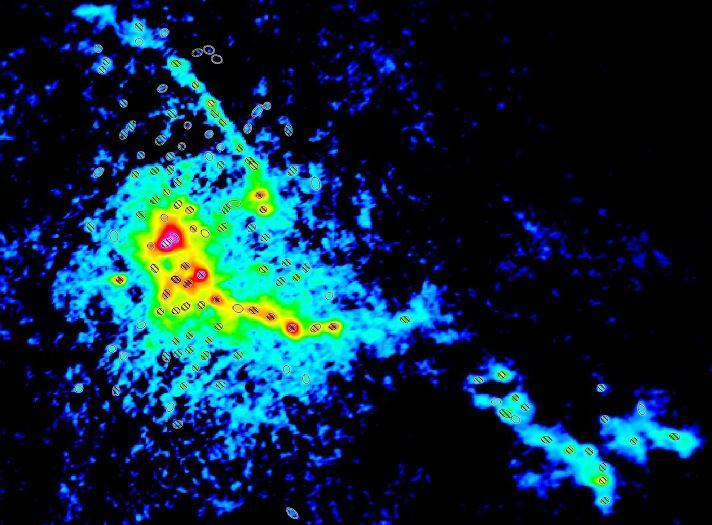Stars aren’t formed in the way we thought, scientists reveal
Our assumptions about the laws of star formation don't seem to hold throughout the universe

Your support helps us to tell the story
This election is still a dead heat, according to most polls. In a fight with such wafer-thin margins, we need reporters on the ground talking to the people Trump and Harris are courting. Your support allows us to keep sending journalists to the story.
The Independent is trusted by 27 million Americans from across the entire political spectrum every month. Unlike many other quality news outlets, we choose not to lock you out of our reporting and analysis with paywalls. But quality journalism must still be paid for.
Help us keep bring these critical stories to light. Your support makes all the difference.
Huge stars are forming in completely unexpected ways in our own galaxy and beyond, new research suggests.
Scientists have long expected that larger stars form in much the same way as smaller ones. But a new study suggests that something unexplained is happening to those high-mass stars, and they are forming in a way that is vastly different to how we expected.
In lower-mass stars – which make up most of those we can see in detail – there seems to be a simple relationship between the mass of the star-forming clouds of dust and gas, and the mass of the star itself once it is born.
But the new study suggests that high-mass stars do not behave in that way. The findings add an extra layer of mystery to the conundrum of what it is that makes stars grow to a certain mass.
The new findings will force researchers to rethink their understanding of how high-mass stars are formed in the universe.
All across the known universe, huge molecular clouds made of dust and gas collapse and then stick together in dense blobs. Those cores then collapse and heat up at temperatures so high that they form into stars.
In our own galaxy, the mass of those cores seems to decide the mass of the stars that come out of them. There seems to be a common pattern that can be seen in all such regions.
But scientists have now looked into a different region of clusters elsewhere in the universe, in an attempt to find whether that relationship works in other places too.
They found that the simple relationship they had presumed would hold throughout the universe appears to be wrong, and that the cores are behaving differently elsewhere.
Using extremely sensitive telescopes, they gained an unprecedented insight into a distant star-forming region named W43-MM1, that lies 18,000 light years away.
The team was able to observe star-forming cores with an extraordinary range, from those similar to the mass of the Sun to ones 100 times more massive.
To their surprise, the distribution of star-forming cores was completely different to what had previously been observed in nearby regions of the Milky Way.
In particular, they observed an abundance of extremely big stars with huge masses, but fewer smaller stars that are more common within our galaxy.
Co-author of the study Dr Kenneth Marsh, from Cardiff University, said: "These findings were a complete surprise and call into question the intricate relationship between the masses of star-forming cores and the masses of the stars themselves, which has long been assumed.
"As a consequence, the community may need to revisit its calculations regarding the complex processes that dictate how stars are born.
"The evolution of a core into a star involves many different physical interactions, and the results of studies such as this should help us better understand how it all happens."
The study is published in the journal Nature Astronomy.
Additional reporting by agencies
Join our commenting forum
Join thought-provoking conversations, follow other Independent readers and see their replies
Comments